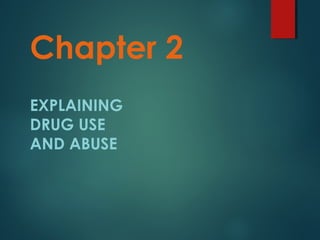There are three main biological theories that help explain drug use and addiction:
1. Abused drugs function as positive reinforcers by enhancing pleasure centers in the brain and releasing neurotransmitters like dopamine.
2. Genetic factors may predispose some individuals to drug addiction through inherited traits.
3. There is substantial overlap between drug addiction and mental illness, suggesting biological explanations are responsible for this link.















































